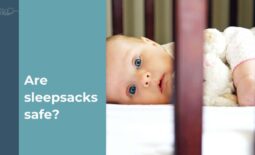Reducing the need for movement: How to stop rocking to sleep
Transitioning your child from falling asleep while being rocked to falling asleep on their own can be difficult, but it’s not impossible.
In this mini-masterclass, you’ll find insights and advice on transitioning away from rocking and movement to help your child fall asleep.
First, it’s important to understand that every child and family is unique. If you’re happy rocking your child to sleep, don’t make any changes! It’s only a problem when it’s a problem. If you want to reduce rocking your child to sleep, then read on.
Movement and rocking can become a problem if it’s causing difficulty for you, where it’s either taking a long time for your child to fall asleep or you’re physically hurting from rocking your child for what feels like an infinite duration.
To start the transition process, gradually reduce the time spent rocking and the intensity of the movement. Start with shortening the duration of rocking by 30 seconds at a time to allow your child to get used to less movement.
Working at a slow and manageable pace tailored to your child’s sleep personality is crucial. For example, more laid-back children may find it easier to reduce rocking time every day, while for more shy or intense children, every two to three days may be more appropriate. You can find my sleep personality quiz HERE.
Big steps are hard, small steps are easier. The goal is to gradually reduce the amount of rocking and holding required before laying them down to sleep. Reduce the time rocking by 15 or 30 seconds. This helps your child depend less on movement to fall asleep. As a result, they are more likely to get through sleep cycles without being rocked, even while in bed. Shorten the rocking movement at the end of the routine, increase holding time by 30 seconds, and then lay your child down. This helps them ease into sleep with less movement. It is important to note that suddenly stopping rocking can cause difficulty falling asleep for the child, which is why it’s crucial to develop a timeline for moving away from rocking.
Transitioning your child from falling asleep while being rocked is a process that requires patience, consistency and understanding.
Check out the examples of timelines to get less involved depending on your child’s sleep personality.
TIMELINES
Laidback Sleep Personality.
Rocking for 10 minutes, rocking for an additional 3 minutes after falling asleep, and holding for 2 minutes before getting into bed.
Night 1.
Rock for 12 minutes, slowing up the last minute. Hold for 3 minutes before getting into bed.
Night 2.
Rock for 11 minutes, slowing up the last minute. Hold for 4 minutes before getting into bed.
Night 3.
Rock for 10 minutes, slowing up the last minute. Hold for 4 minutes before getting into bed.
Continue to reduce the rocking and keep holding for 4 minutes after falling asleep before getting into bed.
Shy Sleep Personality.
Rocking for 10 minutes, rocking for an additional 3 minutes after falling asleep, and holding for 2 minutes before getting into bed.
Night 1 and 2.
Rock for 12 minutes, slowing up the last minute. Hold for 3 minutes before getting into bed.
Night 3 and 4.
Rock for 11 minutes, slowing up the last minute. Hold for 4 minutes before getting into bed.
Night 5 and 6.
Rock for 10 minutes, slowing up the last minute. Hold for 4 minutes before getting into bed.
Continue to reduce the rocking and keep holding for 4 minutes after falling asleep before getting into bed.
Intense Sleep Personality.
Rocking for 10 minutes, rocking for an additional 3 minutes after falling asleep, and holding for 2 minutes before getting into bed.
Night 1, 2 and 3.
Rock for 12 minutes, slowing up the last minute. Hold for 3 minutes before getting into bed.
Night 4, 5 and 6.
Rock for 11 minutes, slowing up the last minute. Hold for 4 minutes before getting into bed.
Night 7, 8 and 9.
Rock for 10 minutes, slowing up the last minute. Hold for 4 minutes before getting into bed.
Continue to reduce the rocking and keep holding for 4 minutes after falling asleep before getting into bed.
You can find the exact plan I use with families in Sleep Training in Slumber Academy.



